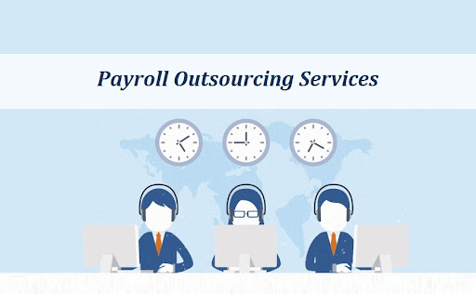SSP is a statutory payment for employees absent from work due to an illness. When the absence lasts four working days, the employee receives sick pay entitlements for the non-working days if the employers do not pay normal wages during such times. (No company sick pay).
Although SSP is reasonably simple to understand, many people are unsure about their eligibility to apply for SSP entitlement.
Statutory Sick Pay is a minimum wage that firms should pay to a sick employee so that he/she can meet the living costs during sickness.
It might be helpful to understand Statutory Sick Pay, the SSP rate, how to calculate it, and how it varies from other types of sick pay, regardless of your role in the organisation.
In this blog, we cover that and more. If you have any questions, you can ask your payroll service provider.
What is Statutory Sick Pay (or SSP)?
Statutory Sick Pay is a specified amount employers must pay their employees for their sickness absence. The current pay rate for sick leave is £99.35/week for approximately 28 weeks of absence due to illness.
Any employee who earns a minimum amount of £123 a week is entitled to Statutory Sick Pay beginning on the fourth day of their sickness.
A “qualifying day” is quite significant in calculating SSP. The qualifying day is when the employee would typically work if they had not been sick. This day qualifies as an SSP-eligible day or a waiting day. This day can be predicated on an agreement between employer and employee or any day of the week that employees are present in the workplace.
Before they claim SSP, each employee must satisfy a set of qualifications. These eligibility criteria include:
- The days you get paid SSP must be qualifying days. These are the days you would typically work if you weren’t resting at home sick.
- Your earnings should be greater than £123 per week. This amount is the minimum earnings limit for National Insurance Contributions.
- You must present proof of your inability, such as a doctor’s note.
- Before the sick leave, you must be an employee and perform as per your job contract and normal rules at work.
- An employee claiming SSP must miss a minimum of four consecutive work days due to illness.
- You must give notice of sickness to your employer within a predetermined time frame or within seven days.
How much is Statutory Sick Pay Per Day in the UK?
Statutory Sick Pay is not calculated at a daily rate. It is available for up to 28 weeks at a weekly rate of £99.35. Starting on the fourth sick day, one is eligible for SSP. If qualified, that person will receive SSP for all days missed due to illness they would have otherwise worked, except for the first three. There are some limited exceptions to the SSP rule, which are discussed later in this article.
How is Statutory Sick Pay calculated?

If you are someone who is trying to calculate their SSP, then you need not worry. It is a relatively simple process.
-
Calculate the weekly income
The first step is verifying that the employee meets the lower earnings limit. The verification entails a relevant period, which ends a day after the last regular payday (before the whole day of sickness) and lasts about eight weeks.
Calculate sick pay entitlements by counting how many weeks were within this time frame.
After that, you can calculate the weekly amount by dividing the total earnings by the number of weeks. The person is eligible for SSP if this amount is £123 or more.
-
Determine the number of days off from work
A week of SSP runs from Sunday to the following Saturday at midnight. You can determine how many complete weeks the person was away from work once they returned to work. Then, you can add any single day or a fraction of a week to this.
-
Process the payment on the following payday
Once you know how much Statutory Sick Pay a person is entitled to, you may execute the payment on the same day the company typically pays salaries and wages for the particular pay period. It will depend on whether they are paid weekly, monthly, or in another predetermined frequency. Also, an employee’s statutory annual leave is accrued when they are on leave due to sickness, and it can be taken during sick leave.
The formula for calculating the SSP is:

WEEKLY RATE OF SSP ÷ NO. OF QUALIFYING DAYS IN A WEEK X (WORKING DAYS WORKER IS ILL – 3)
- SSP for Part-time Workers
The same regulations apply to the SSP of part-time employees and agency workers as to full-time ones. If the person in question, be it an agency worker or an employee on zero hours contract, has an employment contract with the company, has earned at least £123 per week, and has missed four or more work days due to illness, they are eligible for SSP.
They have a right to receive it for the same time period, i.e. 28 weeks.
The formula used for paying SSP may be different if a person works less than five days a week. In this instance, qualifying days would be the working days specified in the employment contract.
- SSP for Full-time Workers
Employers use the same formulas for SSP for full-time employees. The computation for SSP is straightforward.
Take the weekly rate (£99.35 starting in April 2021), then divide it by the number of eligible weekdays. Then, multiply the number of days an employee is entitled by the amount determined.
Remember that the first three days of an employee’s illness are “waiting days,” while the fourth day is a “qualifying day.” Employers must begin SSP payments on the fourth day of an employee’s illness. Read here how the monthly salary is calculated.
Who is Eligible for Statutory Sick Pay?
The following conditions must be met for an individual to receive Statutory Sick Pay from their employer:
- An employment contract to claim SSP is a must. The person needs a written agreement with their employer that designates them as an employee. This indicates that while agency employees are qualified to receive SSP from their clients, independent professionals or self-employed people and freelancers are not eligible for the SSP entitlement.
- An employee under zero hours contract is also compensated in the same way when they are off work sick as long as they have done some work for the employer.
- The employee must have four consecutive days of illness. Once a person has been ill for four days straight, they are entitled to Statutory Sick Pay. The first three days are considered waiting days. These days may also include non-working days like weekends.
- The employee should actively notify the employer. Anyone unable to perform their job tasks due to illness must give their employer a seven-day notice.
- Only those who receive Statutory Sick Pay from their employers and make a statutory minimum earning of £123 per week are eligible. This may come from a full-time or part-time job.
- A fit note, which is necessary after the seventh consecutive day of illness and verifies your illness and your inability to resume work, must be provided. Employers may accept equivalent documents with a written explanation from physiotherapists, occupational therapists, and others as part of an Allied Health Professional Health and Work Report. Employees can self-certify if they are absent from work for seven days or fewer due to illness. Sick leave of longer than 7 days requires a fit note from a healthcare professional, as mentioned above.
- A person cannot receive both statutory maternity pay as well as Statutory Sick Pay at the same time.
- They should have received less than the maximum SSP benefit. People are only allowed to request 28 weeks of SSP from their employer. After this, they need to apply directly to the benefits agency and may be entitled to other benefits, such as disability payments, if they have a long-term illness.
There should be a lack of linked illnesses. An illness is considered “linked” if it lasts at least four days and returns within eight weeks of going away. Individuals may no longer be eligible for Statutory Sick Pay if they have these linked periods for more than three years. Visit to know how many KIT days you are entitled to.
Who is Not Eligible for Statutory Sick Pay?
Employees are ineligible for the SSP if they fall under the categories below.
- If they have already maximised possible SSP (28 weeks).
- There are unique requirements for expectant women and new moms who do not receive Statutory Maternity Pay or Maternity Allowance.
- If employees are absent from work due to a condition connected to pregnancy in the four weeks before the week (Sunday through Saturday) when their child is due.
- If they were detained or participating in a strike on the first day of illness.
- If they are employed outside of the EU, which exempts employers from paying their National Insurance contributions.
- If they commenced or resumed employment within 12 weeks of receiving Employment and Support Allowance.
Knowing all this information is necessary, but you need not indulge yourself in the nitty-gritty of it. You can instead outsource all your payroll functions to us at Dhpayroll and rid yourself of any payroll-related issues.
SSP Related FAQs
What is the current SSP rate in the UK?
Statutory Sick Pay (SSP) is paid at a rate of £99.35 per week for a maximum of 28 weeks. You are entitled to the full statutory amount for the “qualifying days,” which are the days an employee typically works. If your employer offers a sick pay program, sometimes known as an “occupational scheme,” you may be able to get extra.
Is Statutory Sick Pay Pensionable?
Statutory Sick Salary (SSP) is pay that is subject to pension contributions. It would be a part of the total pensionable pay.
Is Statutory Sick Pay taxable?
You are required to pay tax on your Statutory Sick Pay. This payment is a kind of income, so you must pay national insurance and income tax on it. The same is true of sick leave from work. The amount with SSP is relatively small compared to the yearly tax allowance of £12,570 during a tax year. Thus, SSP income typically incurs little or no tax liability. You can receive working tax credits during the period you get sick pay (for the first 28 weeks).
How long is SSP paid for?
If you are too ill to work, you are entitled to financial support of £99.35 per week in Statutory Sick Pay (SSP). Your company will pay for up to 28 weeks of it.
What is form SSP1?
SSP 1 is a document that an employer must provide to a worker who is not eligible for Statutory Sick Pay (SSP) or whose SSP eligibility has ended or is about to stop. This form can be used when employees apply for social security benefits like Employment and Support Allowance. Employees can use the SSP1 form to support that application.
Tags:
Payroll Services



Comments